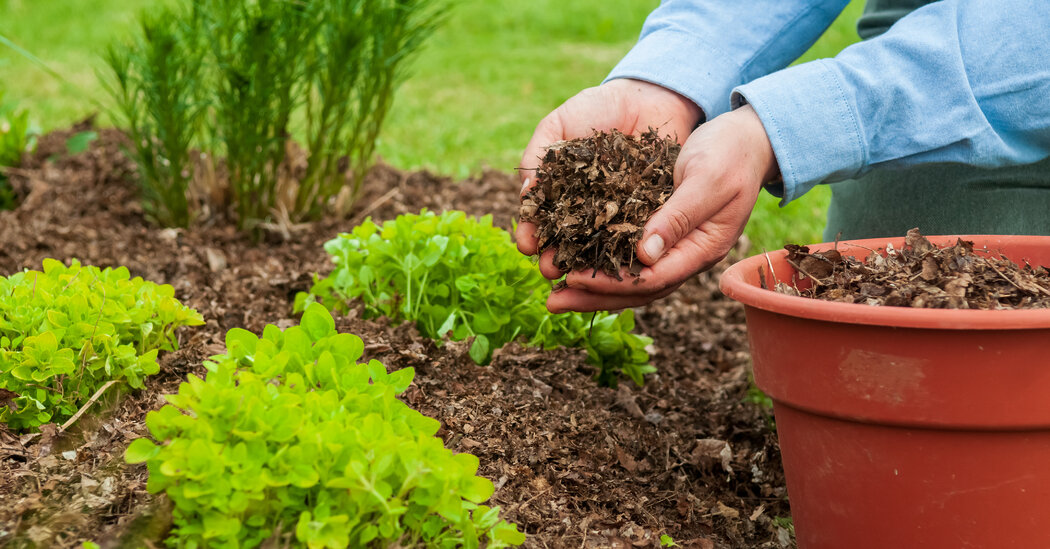
Mulch can mitigate soil compaction, and it is better than bare soil at capturing water and fostering water penetration, so it reduces runoff. It also slows water evaporation from the underlying soil by up to 35 percent, Dr. Fonteno said, and it moderates soil temperatures in the summer and winter.
It does all of this while also growing topsoil, as the degrading organic materials are processed by saprophytic organisms, from bacteria and fungi to protozoa, nematodes and even earthworms. This process releases humates, which Dr. Fonteno describes as “black, gooey liquid” filtering down to coat the mineral particles of soil: sand, silt and clay.
The coated particles bind together in small aggregates, creating spaces for water to penetrate, improving the soil’s tilth.
Even in tough, urban settings, where there is no topsoil layer and only subsoil to start with, “the use of mulch alone can build soil in three or four years,” Dr. Fonteno said. “Every year that you are adding mulch, you are creating additional soil, and your soil will be better.”
Mulch materials can include grass clippings and leaves, straw, bark or wood chips in varying sizes and ground or shredded wood products. The speed at which humates form depends on the mulch: Grass clippings and leaves are processed faster than wood chips, and pre-aged materials break down faster than raw ones.
“The only difference in mulches, as long as you use organic materials, is the rate at which they decompose,” Dr. Fonteno said, adding a caveat about using gravel, which is popular in some gardens. “Putting rocks on top of the soil surface will retard water loss and moderate soil loss, but it won’t grow soil.”






